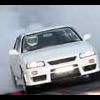Sau Nsw 2nd Offical Track Day For 2006
Announcements
-
Similar Content
-
Latest Posts
-
Paper clip method to read codes also works.
-
By TurboTapin · Posted
It's a 14pin Consult connector. You can use software like Nissan Datascan (NDS 1) to connect. -
By StreetWeapon · Posted
Hello my Aussie brothers, American here: I have a 1999 R34 GTT and would like to get a OBD scanner, but cannot seem to find anything. USDM OBD 1 and 2 doesn’t plug up and I read that I need Japanese specific Obd hardware for the JOBD “protocol”. Any insight or link to what I can buy would be great. Thank you for all your help!! -
Yeah I like it, I haven't seen the others in person so can't compare but I'm happy with it
-
Any Q or V going to this event? SAU NSW x Benzin Cafe Cars & Coffee Sunday 12th October 2025 7:30AM Meeting Benzin Cafe Meet Location: Benzin Cafe Dural RSVP: https://forms.gle/Q9TcFu9DHe4dbvtKA
-








Recommended Posts